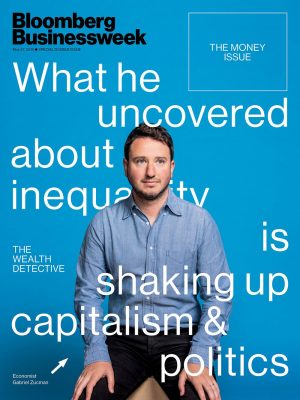The Wealth Detective Who Finds the Hidden Money of the Super Rich




Like many economists, Zucman and Saez have embraced the political implications of their research. Unlike many, they champion policy recommendations that are bold and aggressive. Before Massachusetts Senator Elizabeth Warren started her 2020 presidential campaign by proposing a wealth tax, she consulted the pair, who estimated that her tax would bring in $2.8 trillion over the next decade. She conferred with them again before floating a corporate tax on profits above $100 million, which they calculated would raise more than $1 trillion over 10 years.

The Wealth Detective
“You can conduct this detective work only if you do it to a large extent yourself,” he says. “The wealth is not visible in plain sight—it’s visible in the data.” Lately, he adds, the Bay Area humming outside his window, “I see more of Silicon Valley in my Excel spreadsheets, especially in the amount of profits booked in Bermuda and Ireland.”

His own graduate work in Paris saw him compile evidence that the world’s rich were stowing at least $7.6 trillion in offshore accounts, accounting for 8% of global household financial wealth; 80% of those assets were hidden from governments, resulting in about $200 billion in lost tax revenue per year. At the same time, he was helping his adviser, Piketty, pull together more than 300 years of wealth and income data from France, Germany, the U.K., and the U.S. They co-authored a paper on the numbers, which became a key part of Piketty’s surprise 2014 bestseller, Capital in the Twenty-First Century. The following year, Zucman’s doctoral research was also published as a book, The Hidden Wealth of Nations.

None of it was easy. Tax collectors such as the IRS generally require taxpayers to report income, not wealth. And much of the world’s wealth is held in forms—homes, art, retirement accounts, non-dividend-paying stocks—that produce no income prior to a sale. A real estate mogul with a billion-dollar property portfolio and billions more in cash stashed overseas can still report a tiny income.
Zucman and Saez started with the IRS. The agency opens its doors to researchers under strict conditions, and only Saez, a U.S. citizen, was allowed inside a facility, where he downloaded anonymized statistics up to the extreme end of the income scale. The duo then translated the data into wealth estimates. Saez had had the idea for a while. “I was doubting how that could actually be done, because there are so many complications,” he says. “And then Gabriel came along.” With each asset class, from equities and real estate to pensions and insurance, they painstakingly estimated the relationship between income and wealth in the U.S., checking and tweaking based on data from external sources.
U.S. Wealth Distribution, 2014
Economists argue over the timing and size of the U.S.’s inequality surge, but few deny the broader trend. We live in an age in which the richest man in modern history is reduced by divorce to merely the richest man alive and in which even the most generous billionaires can’t give away money faster than they’re bringing it in. The debate now raging is over how inequality deepened to this extent and what, if anything, to do about it.
Zucman sees ominous signs in the rise of the far right—the threat that has preoccupied him since he was a teenager on the streets of Paris.
Share of Wealth Within Select Countries, 2014

The actual effect of lower taxes on the rich, he argues, isn’t to stimulate the economy but to further enrich the rich and further incentivize greed. In his analysis, when the wealthy get tax breaks, they focus less on reinvesting in businesses and more on hiring lobbyists, making campaign donations, and pursuing acquisitions that eliminate competitors. Chief executive officers, for their part, gain additional motivation to boost their own pay.
“The wealth is not visible in plain sight—it’s visible in the data”


